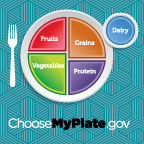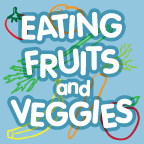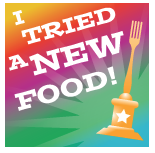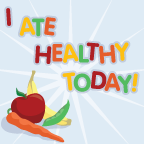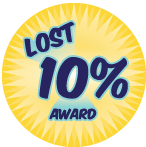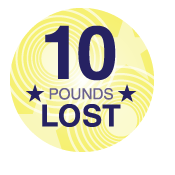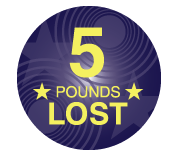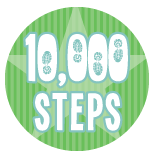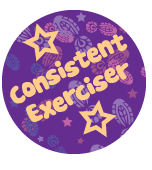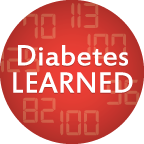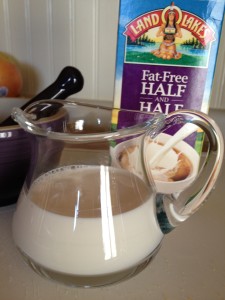Kids:
Archives
Vegetable Spaghetti?
A couple articles ago I wrote about no carb noodles https://news.nutritioneducationstore.com/shirataki/. It seems that people are always looking for something new or different to satisfy that pasta craving or provide a low calorie “vehicle” to carry a sauce. Here is a not-so-new option: spaghetti squash. 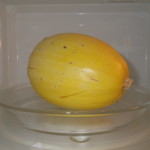
If you have never had a spaghetti squash, you’re in for a treat. It is a vegetable, so also a great way to get more of those suggested vegetable servings. I remember when you could buy them “by the piece” and maybe I’ll see this later in the year when local squash is available, but now I can only find them sold “by the pound” and that price can add up quickly.
Spaghetti squash is a winter squash and will keep for several months if stored in a cool dry place. They won’t keep as long if you store them at room temperature. According to the USDA Nutrient Database, 1 cup contains 42 calories and 2 grams of fiber. Spaghetti squash is a good source of vitamin C, manganese and vitamin B6. Although it is yellow/orange in color, unlike other winter squash, one cup only contains 3% recommended daily value of Vitamin A.
For those who have never cooked a spaghetti squash before–don’t worry, it is easy. They can be baked, boiled or microwaved. I find the hardest part is getting through the outside skin to cut the raw squash. So I eliminate that step by cooking it whole in the microwave.
First I wash the outside of the squash. Then I puncture it with a knife (similar to what you do when baking a potato in the microwave—this allows for steam to escape so you don’t have “exploded” squash parts to clean up inside the microwave). Place the squash on a dish uncovered and microwave for 10-15 minutes depending upon the size. The squash shown in the photo is two pounds and it took 12 minutes. You can turn it over half-way through cooking. It should be soft to the touch. Cut it lengthwise and carefully remove the pulp and seeds. Then with a fork pull the spaghetti-like strands of squash out and fluff them. I got 4-5 cups of edible flesh from my two pound squash. 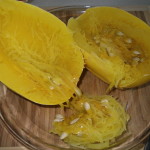
A couple words of caution: be careful when cutting the cooked squash, it is very hot. Removing the seeds is easy, but it’s also easy to get too much of the pulp or too little of the seeds. I opt to error on leaving a few seeds in—they are edible.
As its name implies, the “strands” of squash resembles spaghetti and it can be substituted for pasta in many recipes. I sometimes combine it with regular pasta to “extend” the serving size and giving me the best of both worlds. But, it’s sweet and flavorful on its own— why not eat it as a wonderful vegetable?
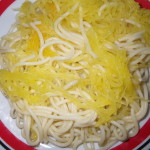
Cheryle Jones Syracuse, MS
Professor Emeritus, The Ohio State University
Half of what?
A couple of weeks ago I suggested the temporary addition of fat-free half-and-half to skim or 1% milk when transitioning the family to a lower fat milk from whole milk. The purpose is to increase the “mouth feel” of the milk—to make you (or your kids) think you’re drinking the higher fat milk.
This idea inspired some questions. The obvious one is how can half-and-half be fat-free when by definition it’s half milk and half cream? I looked it up. The FDA’s Federal Regulations say that half-and-half consists of milk and cream which contains between 10.5 and 18% milk fat. There are several optional ingredients including emulsifiers, stabilizers and sweeteners.
So how can it be fat-free? According to the Land O’Lakes website, there is a FDA regulation (in an effort to promote and facilitate healthier food) that allows manufactures to modify a standardized food to meet a nutrient content claim. In the case of fat-free half-and-half, they are using less cream and nonfat milk/skim in the place of whole milk. Like the original regulation, they are allowed to add other ingredients that improve texture, flavor and appearance.
Comparing the Nutrition Facts labels, you’ll note two tablespoons of regular half-and-half has 40 calories with 3 grams of fat and 1 gram of carbohydrates. The fat-free version of half-and-half contains just is 20 calories, 0 fat and 3 grams of carbohydrates for the same two tablespoon serving. The ingredients show that the cream has been replaced by corn syrup as the second ingredient. Folks that love cream (or half-and half) in their coffee need to make their own decision between the two products. I know it’s not the same…………..but how about using plain skim milk?
Cheryle Jones Syracuse MS
Professor Emeritus, The Ohio State University
Transition skim milk recipe:
- 1 cup skim milk
- 1 tablespoon fat-free half and half
Use the addition of fat-free half-and-half to skim milk just like you you are adding it to coffee: one or two tablespoons per cup. You can also make one or two quarts in advance with the same ratio. As with all dairy products, keep refrigerated.
What is the significance between skim milk and whole milk?
Here is a comparison for one year, keeping in mind most people are supposed to have 3 glasses per day:
- 1 cup whole milk: 150 calories, 8 grams fat, 5 grams saturated fat
- 1 cup skim milk: 83 calories, 0 g fat, 0 g saturated fat
- Savings for switch for a whole year X 3 cups per day: 73,365 calories, 8760 grams fat, 5475 g saturated fat per year!!
Here are more uses for fat-free half and half (besides using it as a coffee creamer):
- Cream soup
- Smoothies
- Custard sauce
- Home-made ice cream – use it in your favorite ice cream recipe for a delicious treat
- Sauces – fat-free half and half makes a creamy finish to gravy or any pan sauce that you make at home.
Disclaimer: although we have pictured Land O’Lakes fat-free half-and-half here, we are not receiving any compensation. Many store brands also feature this product. Choose what you like in your store.




